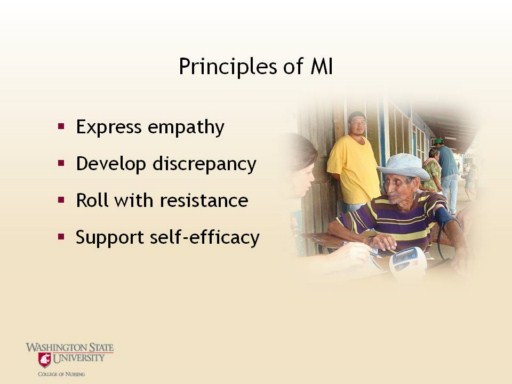| front |1 |2 |3 |4 |5 |6 |7 |8 |9 |10 |11 |12 |13 |14 |15 |16 |17 |18 |19 |20 |21 |22 |23 |review |
 |
Miller and Rollnick state the following as principles for MI:
Express empathy:
•
Acceptance from the health care provider facilitates change
•
Skillful, reflective listening by the health care provider is
fundamental
•
Ambivalence on the part of the patient is normal; nearly everyone is at
least ambivalent, if not opposed to change!
Develop discrepancy:
•
The
patient, rather than the health care provider should present arguments
for change
•
Change is motivated by a perceived discrepancy between the present
behavior and important goals or values
Roll with resistance:
•
A patient’s belief in the possibility of change is an important
motivation
•
The patient, not the health care professional, is responsible for
choosing and carrying out change
•
The health care professionals own belief in the patient’s ability to
change becomes a self-fulfilling prophecy
Support self-efficacy:
•
Avoid arguing for change
•Resistance
is not congruent with direct opposition
•New
perspectives are invited, not imposed
•Resistance
is a signal to the health care provider to respond differently
•The
patient is a primary resource in finding answers and solutions
|